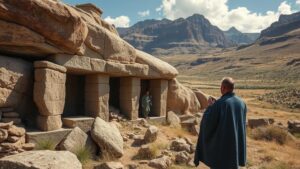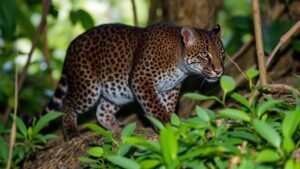Exploring the myths of the “Hidden Valley of Longevity,” said to contain ancient untouched settlements.
Exploring the Myths of the Hidden Valley of Longevity
The Hidden Valley of Longevity is a term that evokes images of ancient, pristine settlements tucked away in remote regions, where inhabitants live significantly longer than average. This myth has captured the imagination of explorers, researchers, and health enthusiasts alike. But, as we delve deeper into this narrative, it becomes essential to separate fact from fiction and examine the real stories that underpin this alluring concept.
The Origins of the Myth
The idea of a “Hidden Valley” is often linked to various cultures and their folklore. For example, in the late 19th century, explorers like the American adventurer, John Muir, spoke of mystical valleys inhabited by individuals whose lifestyles resulted in extraordinary longevity. These accounts were often sensationalized and lacked scientific grounding. Currently, regions like the Caucasus Mountains in Georgia and the Nicoya Peninsula in Costa Rica are often discussed as places where a higher-than-average number of centenarians reside.
Characteristics of Longevity Hotspots
While the concept of a “Hidden Valley of Longevity” may be steeped in myth, certain regions around the world have been recognized for their residents remarkable lifespans. e areas, often referred to as Blue Zones, exhibit specific lifestyle traits:
- Plant-Based Diets: Residents consume abundant fruits, vegetables, whole grains, and legumes.
- Low Stress: A slower pace of life and community oriented practices contribute to mental well-being.
- Active Lifestyles: Daily physical activity is a norm, often integrated into work and social routines.
Concrete Examples of Longevity
To further understand the true nature of these longevity hotspots, let’s examine some real-world examples:
- Sardinia, Italy: This Italian island boasts a significant number of centenarians, attributed to its pastoral lifestyle, high consumption of sheep and goat milk, and a strong sense of community.
- Okinawa, Japan: Well-known for its diet, rich in vegetables and tofu, and an active lifestyle, Okinawa’s elders often emphasize the importance of ikigai, or a reason for being, which keeps them engaged and connected.
- Ikaria, Greece: The residents of Ikaria frequently practice socializing, maintaining close family ties, and consuming home-grown food, all of which contribute to lower rates of heart disease and a longer life expectancy.
The Role of Genetics and Environment
While lifestyle habits play a vital role in longevity, genetics cannot be overlooked. Research suggests that genetics can account for 20% to 30% of our lifespan. For example, studies have shown specific genetic markers linked to longevity, particularly among centenarians. Plus, many of these so-called hidden valleys are located in environments that promote outdoor activities and social connectivity, which is crucial for mental and emotional health.
Debunking Common Myths
Several myths persist about the Hidden Valleys of Longevity, often fueled by anecdotal evidence and sensational media reports:
- The Myth of Diet Alone: While diet is crucial, it is the combination of diet, physical activity, and mental health integration that truly contributes to longevity.
- Longevity is Solely Genetic: While genetics plays a role, lifestyle choices significantly impact lifespan and health span.
- Only Certain Ethnicities Can Live Long: Longevity is not limited to any race or ethnicity but is influenced by a mixture of lifestyle choices and environmental factors.
Real-World Applications
The exploration of the Hidden Valley of Longevity offers valuable insights into improving health and well-being. Here are actionable takeaways that can be applied universally:
- Community Engagement: Foster strong relationships within your community to combat loneliness and support mental health.
- Eat Whole Foods: Prioritize a diet rich in whole, plant-based foods while reducing processed items.
- Stay Active: Incorporate physical activity into your everyday routine, whether through structured exercise or engaging in enjoyable outdoor activities.
Conclusion
The Hidden Valley of Longevity serves as a captivating narrative that blends folklore with the quest for a longer, healthier life. While the existence of an untouched settlement where people defy aging remains a myth, the principles of longevity can be learned from real hotspots around the world. By adopting healthier lifestyles and prioritizing community connections, anyone can work toward enhancing their quality of life and longevity, regardless of their geographical location.



